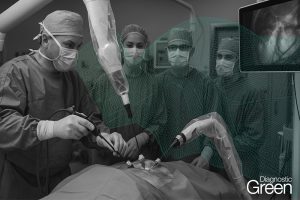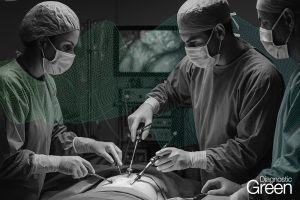Background: Duodenum-preserving pancreatic head resection (DPPHR) serves as a surgical intervention for managing benign and low-grade malignant neoplasms located in the head of the pancreas. This surgical approach enables the thorough excision of pancreatic head lesions, reducing the necessity for digestive tract reconstruction and enhancing the patient’s quality of life. Performing a minimally invasive DPPHR is a complex surgical procedure, particularly when safeguarding the bile duct and the pancreaticoduodenal arterial arch. Robotic surgery is among the latest innovations in minimally invasive surgery and is widely used in many surgical specialties. It offers advantages such as rotatable surgical instruments, muscle tremor filters and up to 10-15 times three dimensional (3D) visual field, and achieves high flexibility and accuracy in surgical operations. Indocyanine green (ICG) fluorescence imaging technology is also applied to provide real-time intraoperative assessment of the biliary system and blood supply, which helps maintain the biliary system’s integrity. We first report the complete procedure of ICG applied to the da Vinci robotic Xi system for preserving the DPPHR. By using ICG fluorescence imaging, the path of the common bile duct was identified and verified. Caution was exercised to avoid injuring the bile duct. After isolating the CBD, the head and uncinate process of the pancreas was entirely excised. Under the fluorescence imaging mode, the wholeness of the CBD was scrutinized for any potential seepage of the contrast agent. Ultimately, a Roux-en-Y end-to-side pancreaticojejunostomy (duct to mucosa) was executed.
Results: The surgery took 265 min and the estimated blood loss was about 150 mL. Without any postoperative complications, the patient was released from the hospital 13 days following the surgery. Postoperative pathology confirmed pancreatic duct stones and chronic pancreatitis. We have successfully performed four cases of robotic DPPHR using this technique, with only one patient experiencing a postoperative complication of pulmonary embolism. All patients were discharged successfully without any further complications.
Conclusions: Employing ICG fluorescence imaging in a robotic DPPHR has been demonstrated to be both secure and achievable. This technique potentially provides novel therapeutic perspectives, particularly for patients with ambiguous delineation between pancreatic and biliary ductal structures.




